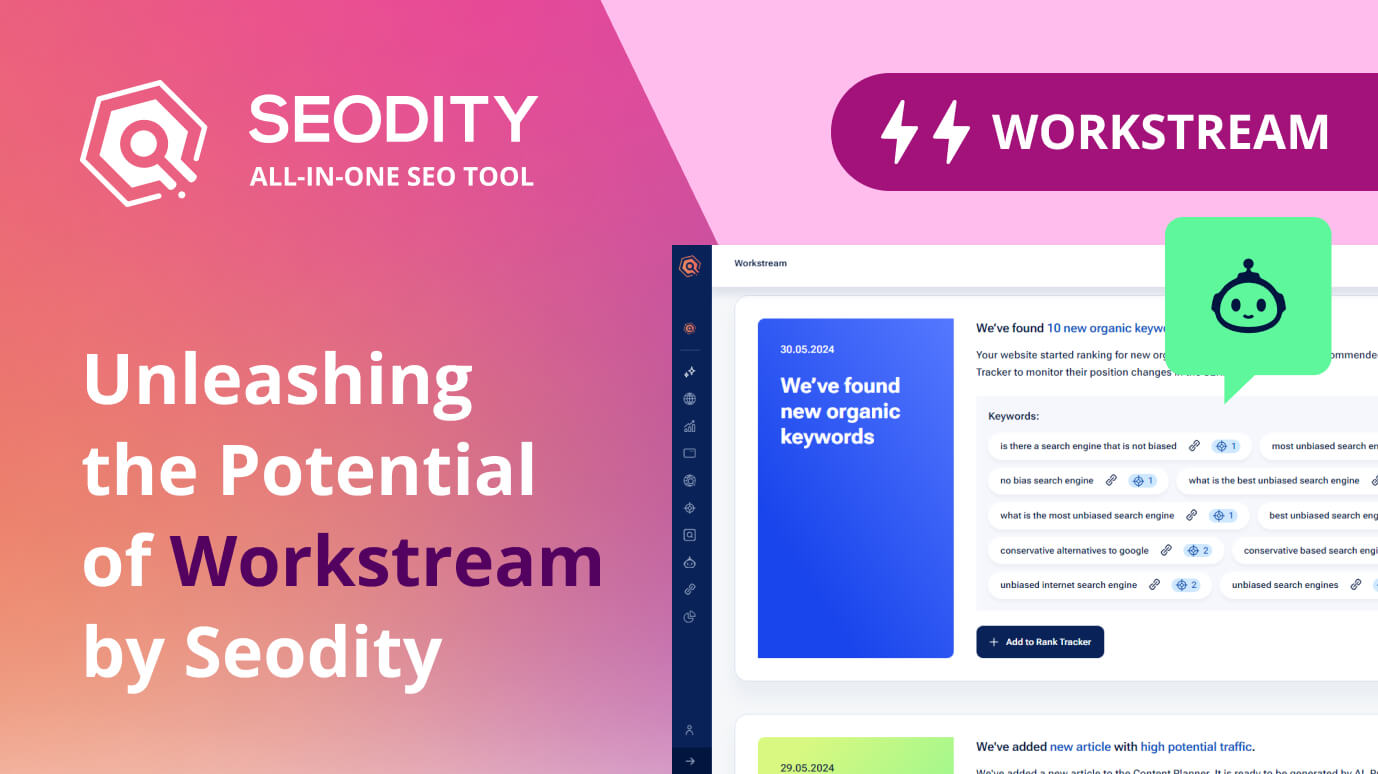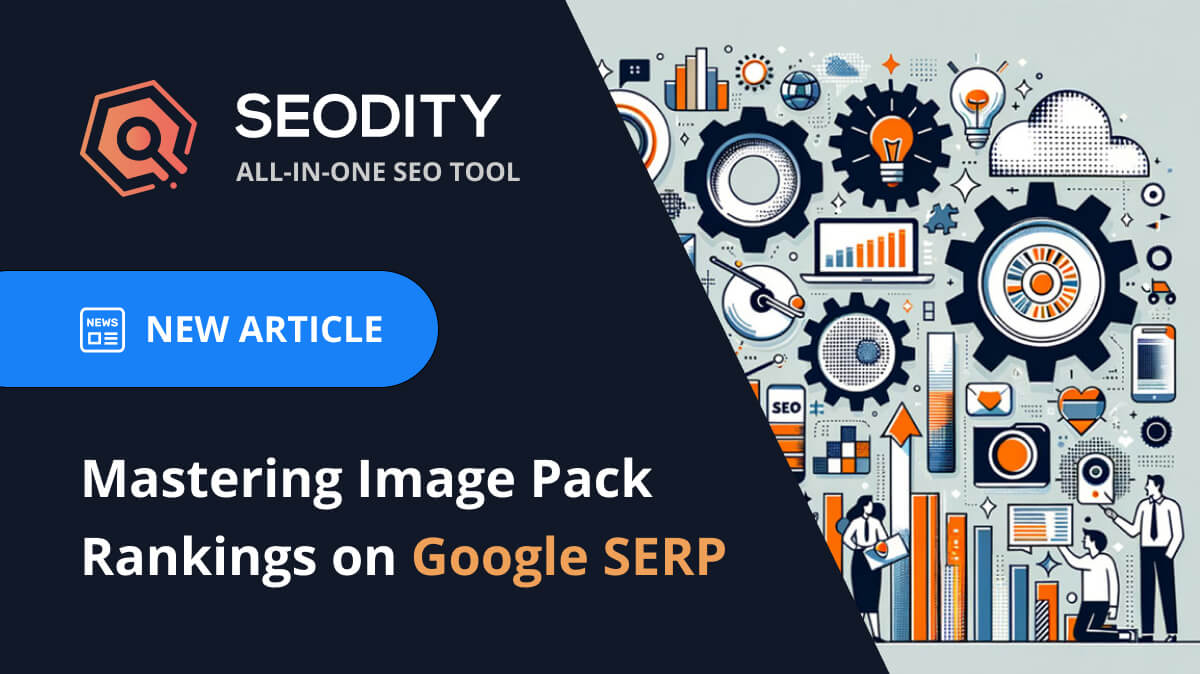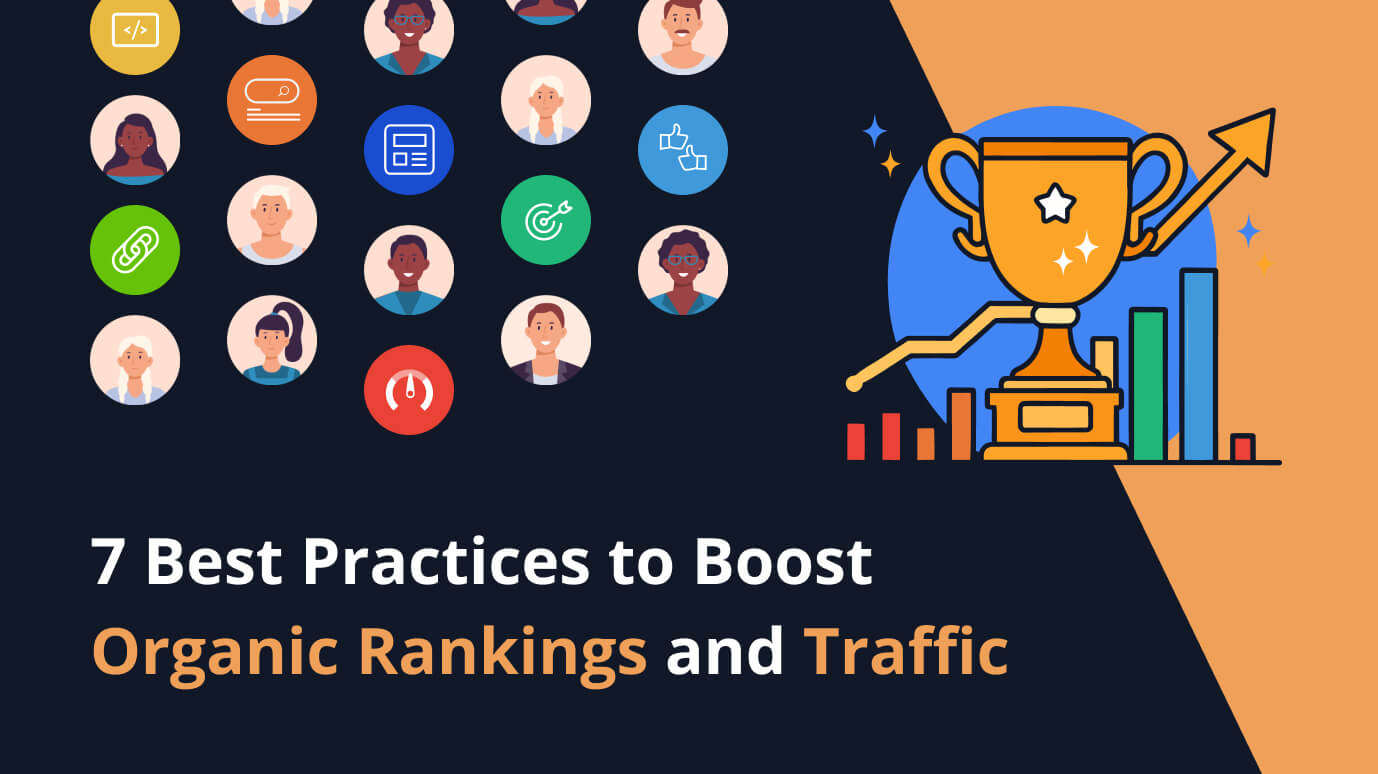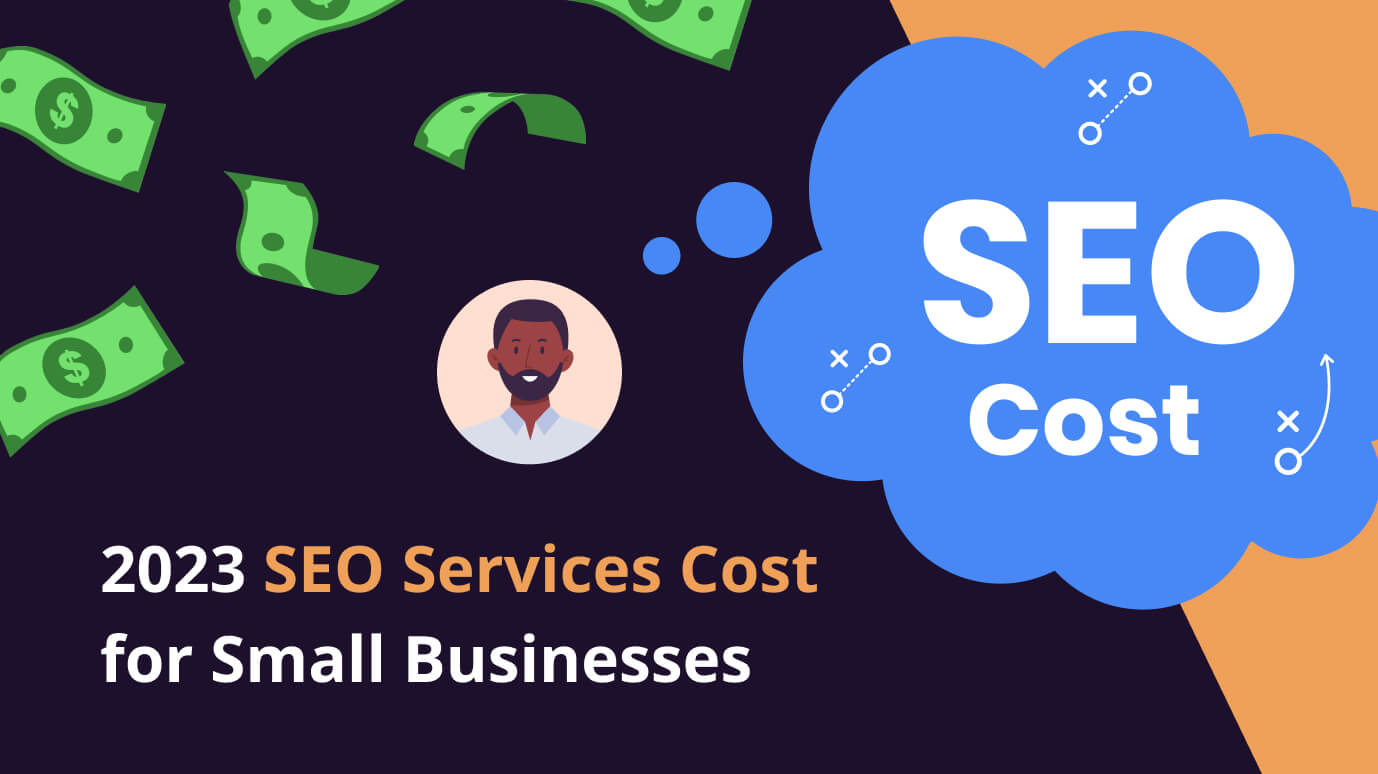
 15 min read
15 min readWhat Is the Future of SEO in 2024? Understanding Critical Trends
Discover the future of SEO in 2024, exploring trends like Google's Search Generative Experience, zero-click searches, AEO, topical authority, and video SEO that shape how we optimize for search engines.
Introduction to the Future of SEO
The digital landscape is incessantly evolving, and with it, the practices of Search Engine Optimization (SEO) are undergoing significant transformation. As we anticipate the advancements that 2024 promises, it is paramount to grasp the multifaceted trends that are shaping the future of SEO. This article aims to dissect the critical developments emerging in SEO, and how these trends will redefine the way businesses and marketers optimize their online presence.
From the integration of artificial intelligence in search behaviors to the emergence of zero-click searches, the arena of SEO is witnessing a pivot towards a more sophisticated, user-centric approach. In the ensuing sections, we will explore the novel paradigm of Search Generative Experience (SGE) introduced by Google, deliberate on the implications of zero-click searches for online content strategies, and examine how Answer Engine Optimization (AEO) is becoming an indelible part of SEO. Additionally, we shall delve into establishing topical authority, the rise of video SEO, and several other factors that stand to influence search rankings.
Preparing for the future entails understanding these currents and incorporating strategies that resonate with the evolving algorithms and user expectations. With the insights presented, you will be equipped to navigate the dynamic SEO ecosystem and position your content to thrive amidst the ever-changing search engine algorithms.
Search Generative Experience (SGE): Understanding Google's AI-powered Search
The advent of Google's Search Generative Experience (SGE) marks a significant milestone in the evolution of search technology. SGE represents Google's foray into leveraging artificial intelligence to enhance user search experiences by providing instant, AI-generated responses to queries. This state-of-the-art feature aims to deliver highly relevant, concise answers along with interactive visual aids, elevating the way users interact with the search engine.
Spearheading a shift toward a more sophisticated and intuitive search interface, SGE bears the potential to revolutionize how we optimize websites for search visibility. Unlike conventional chatbots, SGE proffers an AI-powered snapshot of information that directly corresponds with the user's search intent, supplemented by prompts for deeper exploration. Currently accessible in a limited capacity within the U.S. and exclusively in English, SGE's expansion is poised to transform user engagement at a global scale.
The implications for SEO practitioners are profound. Embracing a proactive approach toward understanding SGE's functionalities and adapting content strategies accordingly is crucial to ensure sustained visibility and traction in a landscape increasingly dominated by AI-driven search experiences. As SGE becomes more pervasive, its influence on search engine result pages (SERPs) will undoubtedly challenge and inspire marketers to cultivate content that not only addresses user queries robustly but is also structured in a manner that aligns with AI's method of information synthesis and presentation.
Recognizing the nuances of SGE is essential for any forward-thinking SEO strategy. While it may shift the dynamics of user interaction and content discovery, maintaining agility in SEO practices and focusing on delivering high-quality, question-answering content will remain pivotal in the journey to reap the full benefits of Google's visionary approach to search technology.
The Impact of Zero-Click Searches and Strategies to Adapt
Zero-click searches have become a game-changer in SEO. These occur when searchers find the answers they need directly on the SERP without clicking through to any website. Improvements in search engine technology fuel this trend, mainly features like knowledge panels and rich snippets which satisfy a user’s query instantly. While this signifies a more efficient search experience for users, it presents a complex challenge for marketers and content creators aiming to drive traffic to their sites.
It is imperative to refine SEO strategies to adapt to the increasing prevalence of zero-click searches. This involves optimizing for featured snippets and other SERP features that can capture a user's attention and provide instant value. By targeting these elements, there is still an opportunity for visibility and even some traffic, albeit less than a traditional click-through.
Understanding the types of queries that typically result in zero-click searches can guide content creators in deciding which topics may yield a featured snippet. FAQs, definitions, and how-to guides are prime examples of content that can be optimized for this purpose. Tools like the "Featured Snippet" box within Semrush’s Keyword Magic Tool can aid in identifying such opportunities by displaying keywords that trigger these coveted positions.
Additionally, aligning with the anticipated shift in user behavior is essential. As Google's Search Generative Experience (SGE) becomes more prevalent, users will likely continue to seek quick, AI-generated answers to their queries. To stay ahead, content must directly and comprehensively address user questions, which SGE, in turn, can readily pull from to generate responses. This keeps your content within the sphere of relevance, even as the nature of searches evolves.
Ultimately, staying agile and responsive to the evolving search landscape is paramount. While zero-click searches can seem like an insurmountable barrier to traffic, they also offer a unique opportunity to establish your site as an authority by providing succinct, accurate information directly within SERPs. With intelligent adjustments to SEO practices, businesses can continue to ensure their content reaches and resonates with their target audience.
Incorporating Answer Engine Optimization (AEO) in SEO Strategy
With the proliferation of AI-driven search experiences like Google's Search Generative Experience (SGE) and users' increasing reliance on immediate, conversational responses, Answer Engine Optimization (AEO) has become critical for staying pertinent in the SEO landscape. AEO is the art of tailoring content specifically to satisfy the demands of answer engines that prioritize direct answers to user inquiries over traditional search results. This content must not only be rich and informative but also structured in a format conducive to AI processing and understanding.
Implementing an AEO-focused approach means creating content that is direct, clear, and accessible, often using a Q&A format that answer engines can easily parse. FAQs within content pieces, as well as articles that revolve around common questions in your niche, can prove particularly effective. To identify important questions and conversational queries, tools like Semrush's Keyword Magic Tool can be invaluable. By analyzing popular questions, you can develop a content strategy that directly aligns with user search patterns.
Moreover, AEO strategies should prioritize content that competes for SERP features like 'People Also Ask' boxes and 'Featured Snippets', as they are prime real estate for answer engines. These optimizations attempt to place your content directly in the path of users, who may receive their answers without needing to navigate away from the SERP, thereby reinforcing your brand's position as an informative authority.
In essence, while AEO is a distinct notion from SEO, integrating both methodologies can ensure continued content visibility and relevance, even as search behaviors evolve towards quick answers and voice-driven queries. As companies realign their content strategies to embrace AEO, the emphasis is on providing value through swift, succinct answers that could potentially place them at the forefront of this transformative era in search technology.
Establishing Topical Authority for a Competitive Edge
Securing a competitive edge in the SEO realm necessitates the establishment of topical authority. This concept revolves around becoming the definitive source of information on a specific subject, signaling to search engines and users alike that your content is trustworthy, comprehensive, and the go-to resource for particular queries. Establishing topical authority is a deliberate and methodical process, founded on creating and interlinking a wealth of content within a particular niche or topic area.
Building topical authority starts with the exhaustive research and identification of central themes and keywords related to your niche. This can be achieved by leveraging tools like Semrush's Topic Research, which helps identify not just core topics but also the subtopics that users are searching for. The aim is to produce an interconnected content hub that covers the chosen subject in depth, thereby signaling to search engines that your site possesses deep expertise in the area.
Next, structuring your content into topic clusters can be a game-changer. A topic cluster strategy entails crafting a "pillar" content page, which provides a broad overview of the subject, and supplementing it with a series of "cluster" content pages that delve into related subtopics. Each piece of content should not only answer specific user queries but also link back to the pillar page and between each other, forming a comprehensive resource network.
It is not enough, however, to merely create content. Ensuring that the information is up-to-date, accurate, and continuously improved is paramount in solidifying topical authority. Frequent updates and enhancements to existing content keep your pages fresh and more likely to retain high rankings on SERPs. Additionally, gathering backlinks from reputable sites within your niche further reinforces the perception of authority, as it is an endorsement of the quality and relevance of your information.
By solidifying your topical authority, you fortify your brand's position in the industry and on search rankings. Not only will this practice strengthen your SEO foundation, but it also cultivates trust with your audience, positioning your brand as a reliable and informative voice in a crowded digital space.
Maximizing Opportunities with Video SEO
As we delve into the varied avenues of SEO advancement, the proliferation of video content across the digital landscape becomes impossible to ignore. The potent combination of increasing video consumption and the search engines' emphasis on video results underscores video SEO's pivotal role in comprehensive SEO strategies for 2024 and beyond.
Video SEO is more than just an accessory to textual content; it's a dynamic element that offers an immersive experience conducive to higher engagement levels and improved SERP positions. Marketers and content creators are tasked with producing captivating video content and ensuring that it is optimized effectively for search engine discovery and user satisfaction.
To tap into the immense potential of video SEO, you must start with meticulous keyword research, specifically tailored for video content. Identifying the right keywords through tools such as Semrush's Keyword Analytics for YouTube app can guide your video titles, descriptions, and tags—crucial elements that signal relevance to search engines and potential viewers.
Incorporating video content into your SEO strategy means adhering to best practices such as providing clear, engaging visuals, quality sound, and transcripts or closed captions that not only aid comprehension but also provide additional textual data for search crawlers to index. The alignment of your video content with the overall messaging and topic clusters of your site further enhances coherence and topical authority.
To capitalize on video SEO, it's also essential to take note of emerging trends like the use of schema markup to highlight videos in search results, or understanding the various video hosting options and their respective impacts on traffic generation. Allocating resources to not only create but also promote video content through social media and embedding on relevant web pages can increase both reach and backlinks to your site.
Approaching video SEO with the same level of strategic planning and refinement as traditional SEO is paramount. Balancing creative video production with data-driven optimization positions your brand to soar atop the wave of digital transformation that video content is bringing to the SEO forefront.
Emerging SEO Factors Influencing Search Rankings
As the embodiment of digital marketing continues to flourish, emerging SEO factors increasingly influence search rankings. Search Engines, particularly Google, incessantly refine their algorithms, opting to endorse content that demonstrates exceptional quality and relevance. It becomes crucial for SEO professionals to discern and integrate these novel factors into their optimization strategies.
The burgeoning importance of AI in search algorithms has catalyzed the emergence of new ranking factors. Those factors that are empirical and data-driven are superseding traditional, intuition-based elements. This shift places a premium on content precision, adaptability, and user engagement—attributes that align neatly with the evolution of search towards a more AI-centric era.
Search engines now prioritize many intricate factors, such as user experience signals, content relevancy, and mobile-first design. Their proclivity toward websites that load swiftly and provide a seamless mobile user experience has made Core Web Vitals and mobile usability paramount. Additionally, the value of backlinks remains undiminished, but the emphasis on link quality over quantity has become more pronounced.
Other emergent factors include high-quality, authoritative content—the kind that users find helpful and that garners engagement. Signals such as click-through rate, time on page, and social shares are being observed closely by search engines to gauge content value. Furthermore, the adoption of structured data markup and optimization for voice search has become more integral because of their contribution to enhancing the search experience.
Staying abreast of these emerging SEO factors is not just about ensuring compliance with search engines but about being proactive in offering the best possible experience to the end user. It's clear that the future of SEO will be dictated by a combination of these emerging factors that smartly intertwine technical prowess with undeniable value delivered directly to users.
Ahead, we'll continue to dissect the significance of user experience in search rankings and present ways to embrace the challenge of delivering content excellence in a dynamic digital world.
Focusing on User Experience for Improved SERP Rankings
As SEO continues to evolve, a clear trend has emerged: search engines further emphasize the importance of user experience (UX) in SERP rankings. This prioritization is underscored by the introduction of Core Web Vitals by Google, a set of specific factors that the search engine considers critical in evaluating a webpage's overall user experience. These include the loading performance, interactivity, and visual stability of a page.
Improving UX requires a multifaceted approach that goes beyond mere aesthetics. It involves optimizing page load times, ensuring content is easily accessible and readable on various devices, and providing a secure browsing environment. Additionally, UX takes into account the overall structure and navigability of a website, encouraging SEO professionals to construct clear pathways for users to find the information they seek effortlessly.
To truly meet the needs of modern web users, websites must embrace mobile-first design principles. The widespread use of smartphones to access the internet means that search engines often prioritize sites that provide a seamless mobile experience. This includes responsive design that adapts to different screen sizes, touch-friendly navigation, and features that make mobile browsing more efficient.
Furthermore, UX is not solely about technical optimization; it also encompasses the content's ability to engage users. Quality content that is relevant, informative, and formatted in a reader-friendly manner contributes significantly to a positive user experience. It is essential to pair strong content strategies with UX optimization, as compelling material holds the power to increase dwell time and reduce bounce rates, signaling to search engines that your site offers value to visitors.
The link between high UX standards and improved SERP positions strengthens as the digital ecosystem becomes more user-focused. Integrating UX into an overall SEO strategy is no longer optional but a necessity for any business striving for digital success and visibility. By enhancing the user experience, digital marketers can create a foundation that supports not only search engine rankings but also customer satisfaction and brand loyalty.
Keeping Up with Content Velocity through Regular Updates
Content velocity—the rate at which new content is published and updated—plays a significant role in maintaining search engine relevancy and meeting the evolving demands of users. With the content landscape continuously growing at an unprecedented speed, updating and refreshing existing content is critical for SEO success in 2024. To stay competitive, businesses must prioritize a strategy that keeps their content fresh and aligned with the latest information and trends.
Adopting a proactive approach to content management involves regularly auditing your content to identify pieces that require updates or improvements. This is not limited to textual changes; it also encompasses ensuring multimedia elements, such as images and videos, are current and optimized for today's user preferences. A content refresh can imply updating statistics, incorporating new insights, or even adapting the tone and presentation style to resonate with current audiences.
A regular reevaluation of your keyword strategy also falls under this process, as user search behavior changes over time. Updating content with high-performing, relevant keywords can revive an article's visibility and drive a new wave of organic traffic. Additionally, revisiting and strengthening interlinking strategies within your site encourages deeper user engagement and allows search engines to crawl and index your content more efficiently.
Maintaining a finger on the pulse of content trends is essential, but ensure that any updates align with your brand's messaging and the informational needs of your audience. Leveraging analytical tools can shed light on content performance metrics, helping you understand which pieces resonate most with readers and deserve the investment of an update. In an environment where the latest information holds immense value, giving your content the attention it deserves can significantly impact your SEO endeavors.
Shift in User Search Intent Towards Transactional Queries
Observations in SEO indicate a noticeable migration of user search intent toward transactional queries. This shift underscores users' growing preference for actions tied to making a purchase, booking a service, or engaging in transactions directly from their search results. Factors such as enhanced SERP features and the proliferation of mobile devices play roles in accommodating and amplifying this trend.
Understanding and adapting to the change in user search behavior has become paramount for SEO practitioners. The traditional focus on informational content, while still significant, is no longer sufficient. Successful SEO strategies now require content that bridges the informational and transactional divide more seamlessly—content that not only informs but encourages action.
Capitalizing on this trend entails incorporating clear call-to-action elements within your website's content and ensuring your pages are optimized for conversions. Product reviews, service comparisons, and how-to guides related directly to your offerings are ways to align content with transactional queries. Moreover, utilizing structured data to highlight prices, availability, and product features directly within SERPs can improve visibility and click-through rates for transactional queries.
SEO experts need to engage with tools like Semrush to monitor the evolving landscape of keyword intent to refine their targeting strategies for such queries. This facet of SEO work is becoming even more nuanced as voice search and mobile browsing shape the way consumers engage with online content. In crafting content that answers transactional queries, make sure your site stays agile to accommodate not only current behaviors but also adapts to emerging trends that continue shaping the commercial intent of searchers.
Ultimately, anticipating the directions user search intent may take, and proactively adjusting your SEO approach, is fundamental to maintaining relevance and competitiveness in a digital market geared increasingly towards immediacy and transactions directly from search results.
Conclusion: Staying Ahead with SEO Evolution
The dynamic field of SEO is entering an exciting epoch characterized by the emergence of artificial intelligence, the rise of answer engines, and the shift towards user-focused experiences. As we navigate through these transformative times, our principal aim should be to adapt and innovate. Staying ahead with SEO means continuously evolving with the changing tides, keeping abreast of the latest trends, and refining strategies to align with the current and future requirements of both search engines and users.
While AI, like Google's SGE, reshapes the search landscape, incorporating Answer Engine Optimization (AEO) will become indispensable. Meanwhile, establishing topical authority will aid in projecting a credible and knowledgeable presence online. The integration of video content and understanding the importance of user experience have also risen to the forefront of SEO priorities, signifying the multi-dimensional nature of modern SEO practices.
To ensure consistent traffic and high rankings in this new era, SEO cannot remain static. It requires a proactive approach that involves regularly updating content, auditing SEO practices, and most importantly, placing the user's needs and experience at the center of all efforts. By staying informed and agile, ready to implement swift changes, we can secure the competitive edge necessary to not only survive but thrive in the ever-evolving world of search engine optimization.
Ultimately, the future of SEO demands a blend of technical acuity, creative thinking, and an unwavering commitment to quality. Our readiness to embrace change and our unwavering dedication to excellence will determine our success in the fast-paced, AI-driven search environment of tomorrow.

Marcin is co-founder of Seodity
.svg)
















